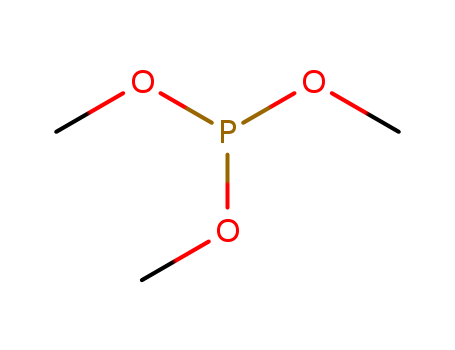Suppliers and Price of Trimethyl phosphite
- Business phase:
- The product has achieved commercial mass production*data from LookChem market partment
- Manufacturers and distributors:
-
- Manufacture/Brand
- Chemicals and raw materials
- Packaging
- price
- Usbiological
- Trimethyl Phosphite
- 5g
- $ 319.00
- Strem Chemicals
- Trimethylphosphite, 97%
- 250g
- $ 54.00
- Strem Chemicals
- Trimethylphosphite, 99%
- 50g
- $ 46.00
- Strem Chemicals
- Trimethylphosphite, 99%
- 250g
- $ 182.00
- Strem Chemicals
- Trimethylphosphite, 97%
- 1kg
- $ 161.00
- Sigma-Aldrich
- Trimethyl phosphite for synthesis. CAS 121-45-9, molar mass 124.08 g/mol., for synthesis
- 8005530500
- $ 190.00
- Sigma-Aldrich
- Trimethyl phosphite for synthesis. CAS 121-45-9, molar mass 124.08 g/mol., for synthesis
- 8005530100
- $ 37.20
- Sigma-Aldrich
- Trimethyl phosphite
97%
- 5g
- $ 36.00
- Sigma-Aldrich
- Trimethyl phosphite
≥99%
- 25g
- $ 35.80
- Sigma-Aldrich
- Trimethyl phosphite for synthesis
- 100 mL
- $ 35.61
-
Total 55 raw suppliers



 Xn
Xn


